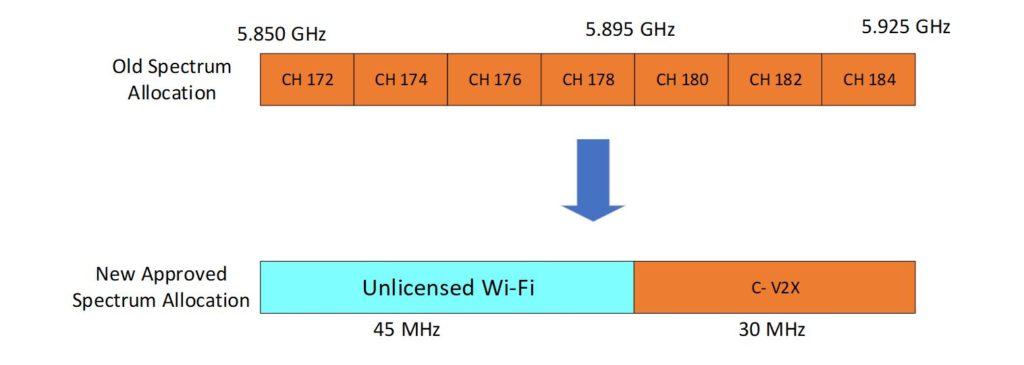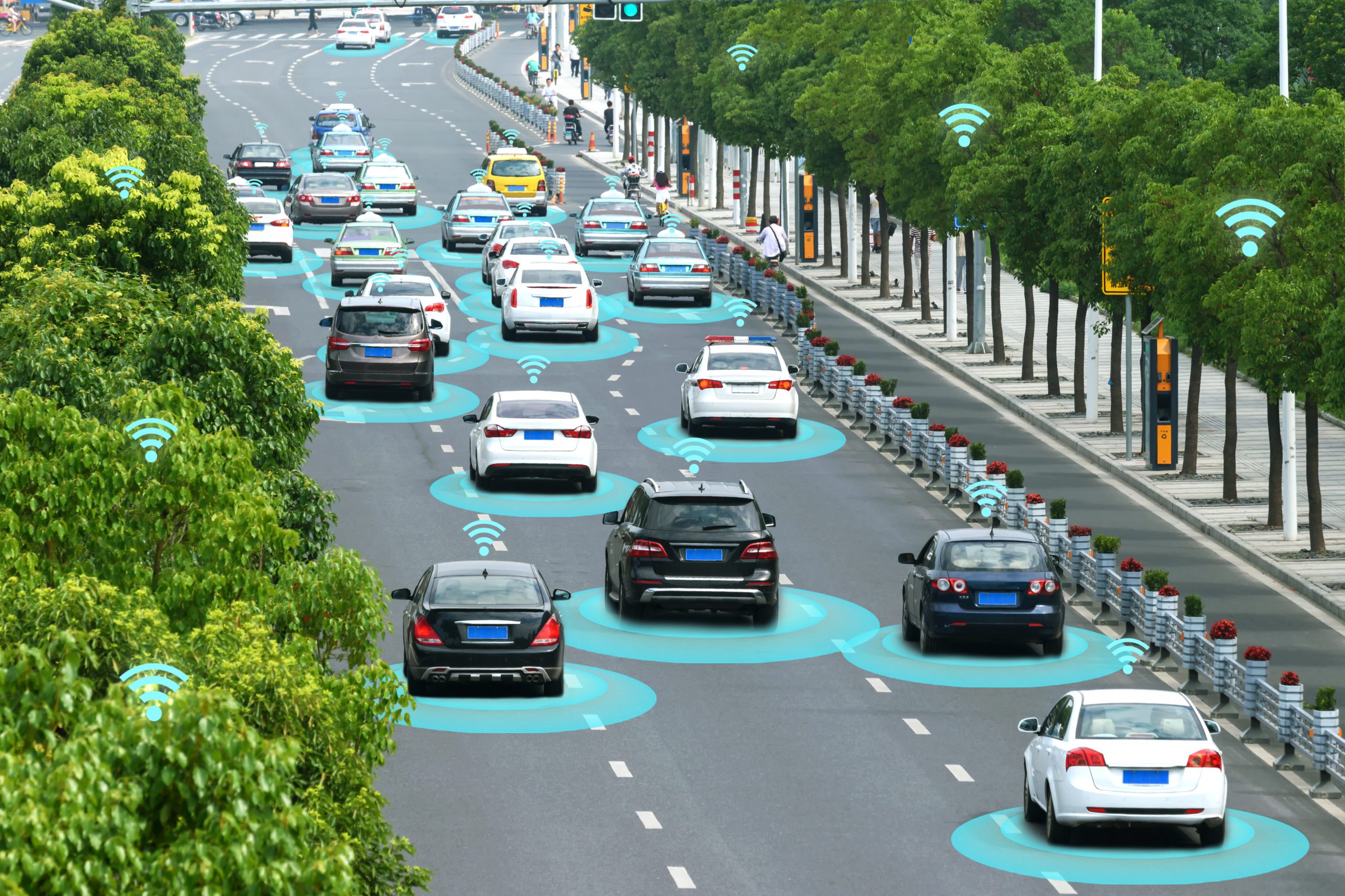Q: What is 5G?
A: Simply put, 5G is short for “5th generation” for the cell-based systems defined by 3GPP (3rd Generation Partnership Project). You may also see the standard called 5G-NR (the NR stands for “new radio”). If the earliest mobile network—analog voice calls, no SMS, no mobile data or browsing—was the first generation, 5G is its great-great-grandchild. (Source: Intel, Wikipedia)
Q: Is C-V2X the same as 5G?
A: No, C-V2X stands for Cellular-Vehicle to everything and is a technology that is designed to perform Connected Vehicle application by connecting devices directly without using cellular networks and cellular network providers. It uses cellular standards to transmit and receive information. It is currently based on the LTE standard.
From a frequency point of view. C-V2x uses licensed frequency bands from 5.895 GHz to 5.925 GHz. 5G uses three frequency bands: low band 600 – 850mhz, mid-band 2.5 to 3.7 GHz, and high band, NR, 24.25Ghz and above. The similarities include the number “5” and the letter “G,” but they are operating on completely different and non-overlapping frequencies. (Source: FCC, Intel, Wikipedia)
5G “can” work with C-V2X in the future as they are both cellular-based platforms.
Q: Since C-V2X is Cellular based, can my cell phone act as an On-Board Unit (OBU)?
A: No, C-V2X communication is a peer-to-peer infrastructure using the PC5 Sidelink LTE interface, which does not require going back to cell towers for service. The current cell phones rely on cell towers for service and does not support the PC5 Sidelink LTE interface. In addition, cell phones do not have accurate geofence definitions to accurately represent the user’s individual location and dimensions, whereas the OBU can. C-V2X does not use network towers for synchronization, it uses GPS timing to synchronize data between the devices.
Q: Can C-V2X work with DSRC?
A: These two technologies are fundamentally different on the access layer, so they are not interoperable.
Q: Will C-V2X suffer the same propagation delay typical of cell networks?
A: C-V2X uses PC5 Sidelink LTE communications that allow the radio to work in a peer-to-peer setup. It has similar, if not identical, ultra-low latency properties to DSRC.
Q: Who uses DSRC and who uses C-V2X? Can they co-exist?
A: DSRC has been adopted mainly in Europe and Japan for the automakers. C-V2X is adopted by some US automakers such as Ford. For Yunex Traffic RSUs, DSRC and C-V2X can operate simultaneously.

Q: What is the FCC NPRM?
A: November 18, 2020, the FCC approved Report and Order and Further Notice of Proposed Rulemaking:
- Lower 45 MHz – CH172 – CH178 reallocated for use by unlicensed Wi-Fi devices
- Transportation applications using CH172 – CH178 must migrate to the upper 30 MHz – CH180-CH184 within a year
- C-V2X becomes the standard for enhanced automobile safety
- Further, NPRM seeks comments on how to transition ITS operations from DSRC to C-V2X based technology.
- FCC also adopted an Order of Proposed Modification which proposes to modify all 5.9 GHz band ITS licenses in accordance with today’s (11/18/2020) changes within 60 days from publication in the Federal Register (Sources: FCC, Yunex Traffic)
Q: What is the most current C-V2X release and what happened with future technology upgrades?
A: The most current C-V2X release that hosts all the apps is rev. 14. Even though Qualcomm announced rev. 15 for a 2019 release, it never released it as of to date. Being all the apps were thoroughly tested on rev. 14 worldwide, there has been no plans to release rev. 15.
Rev. 16 will be a hardware upgrade and is now anticipated in around 5 years. Rev. 16 will be backward compatible with rev. 14 in the same way 5G is backward compatible with 4G. In other words, it will serve apps in both LTE and 5G with the PC5 Sidelink. In the auto industry, upgrade cycles are more frequent than the traffic industry, but they are always backward compatible.(Sources: Qualcomm)

